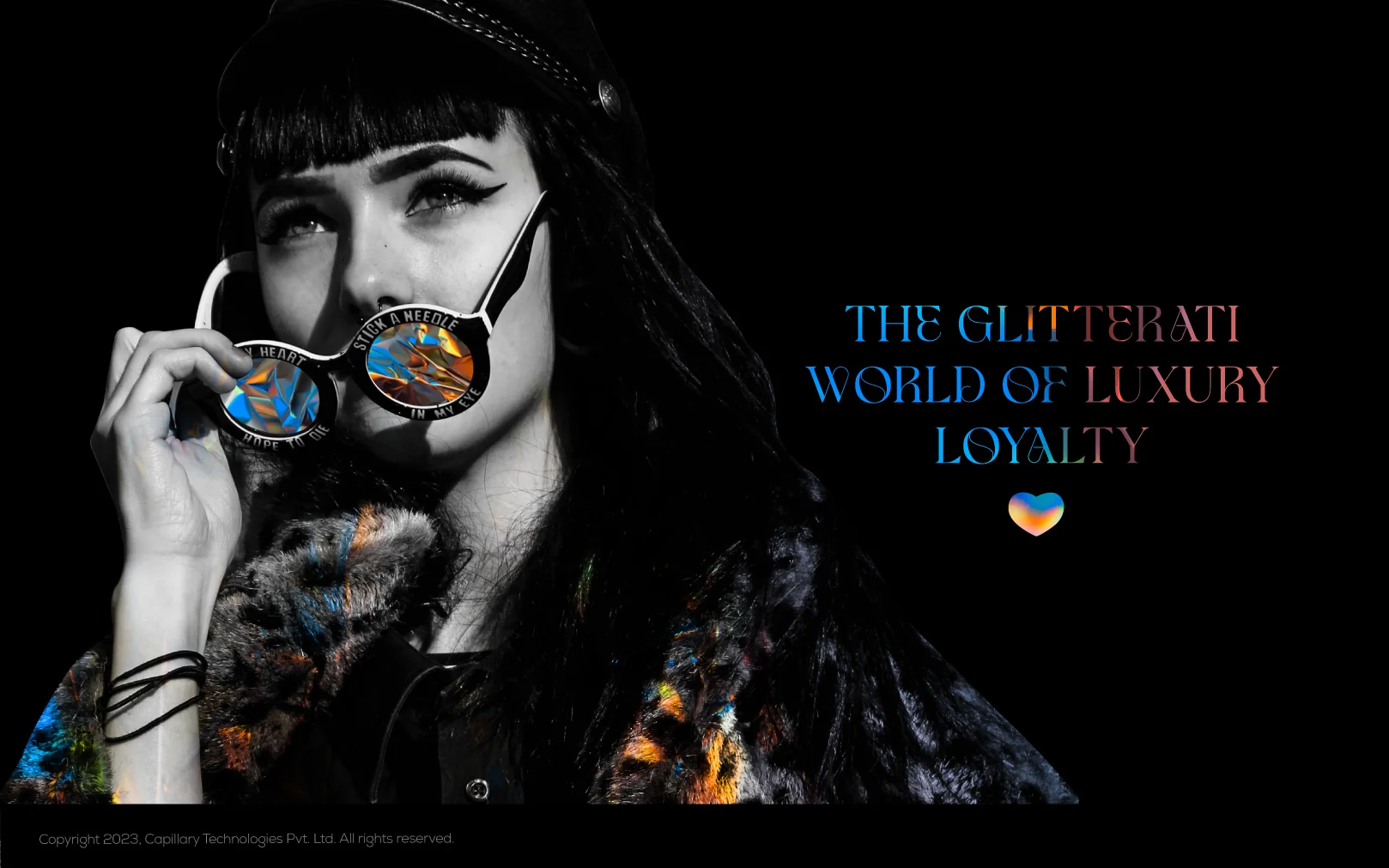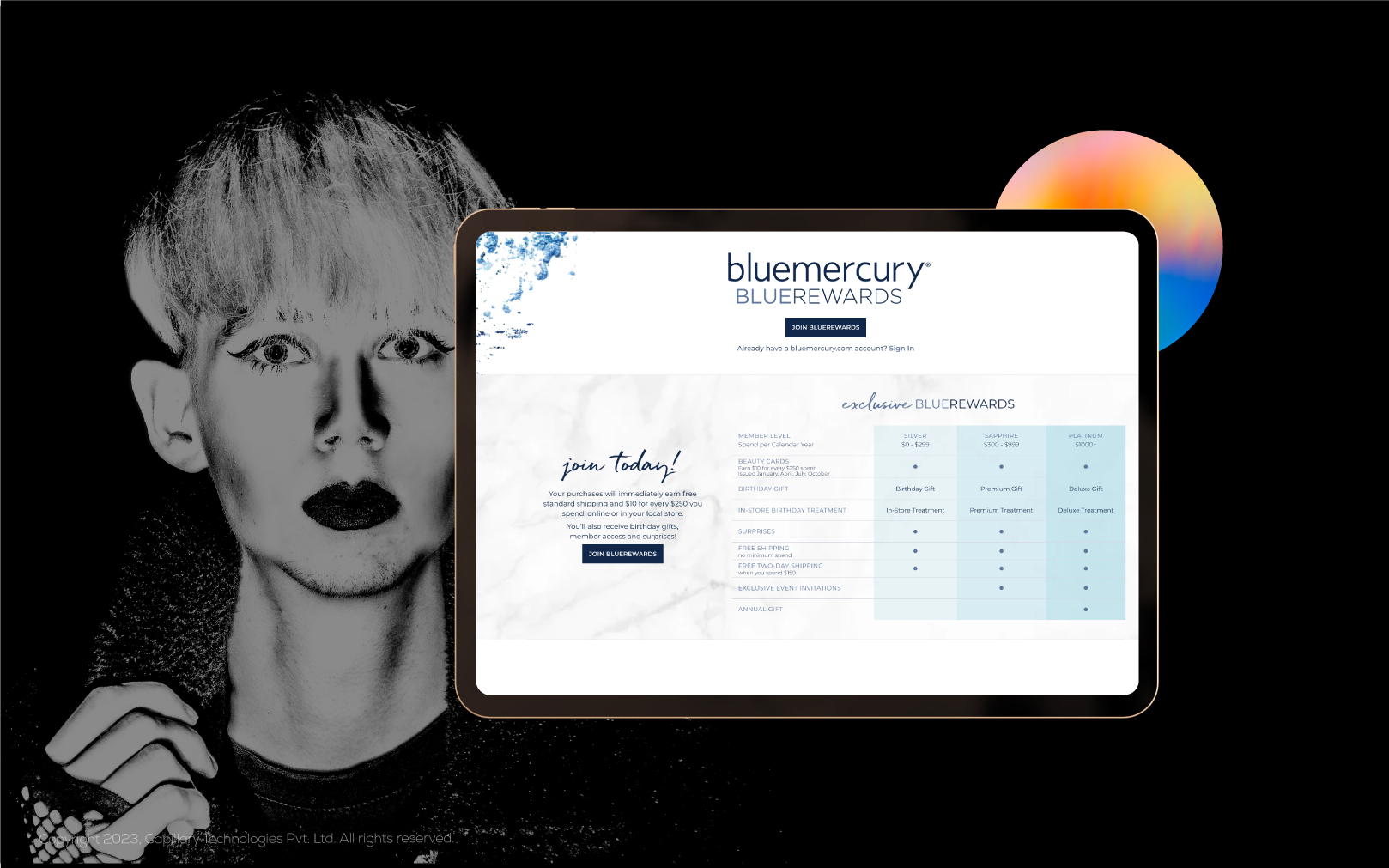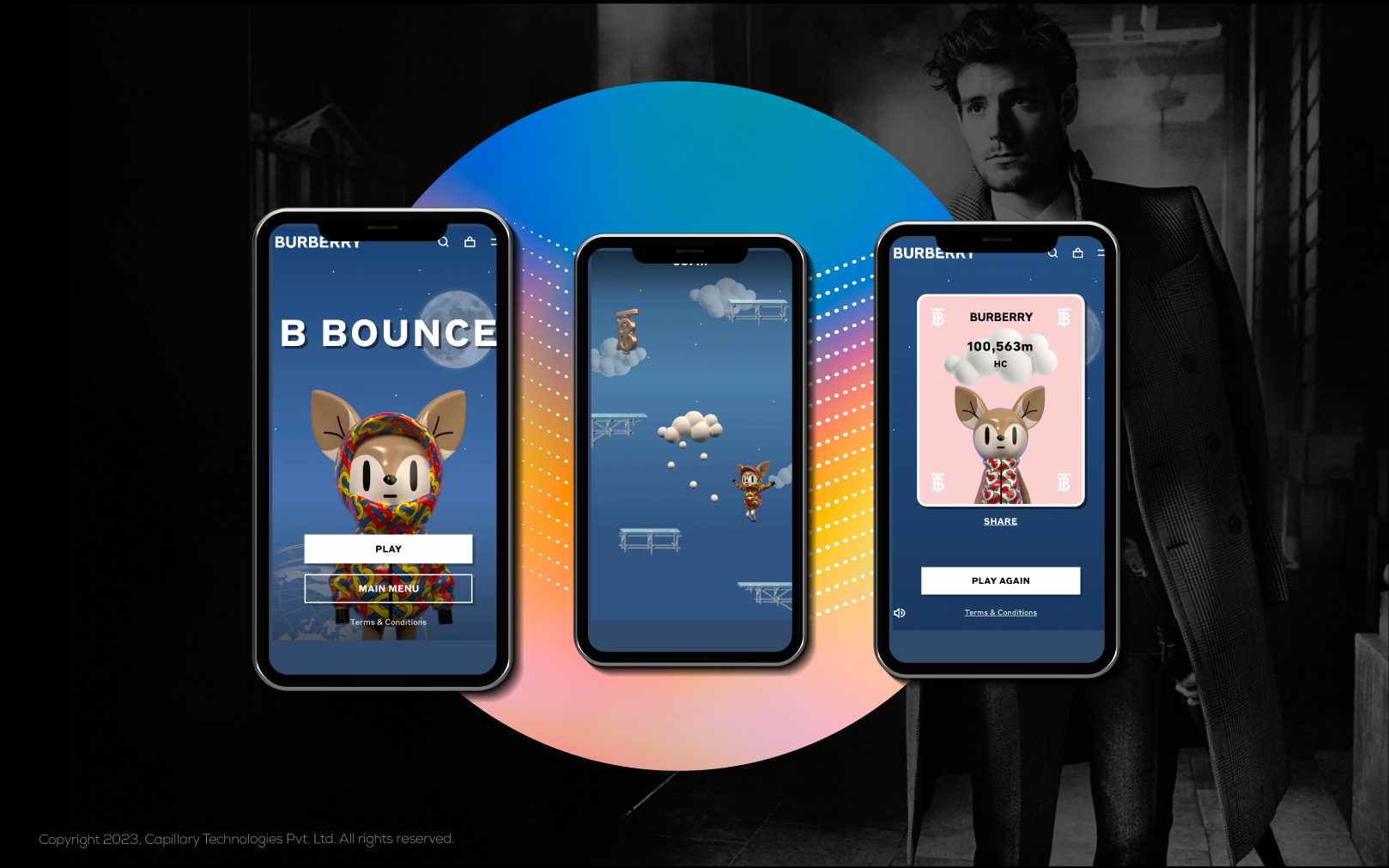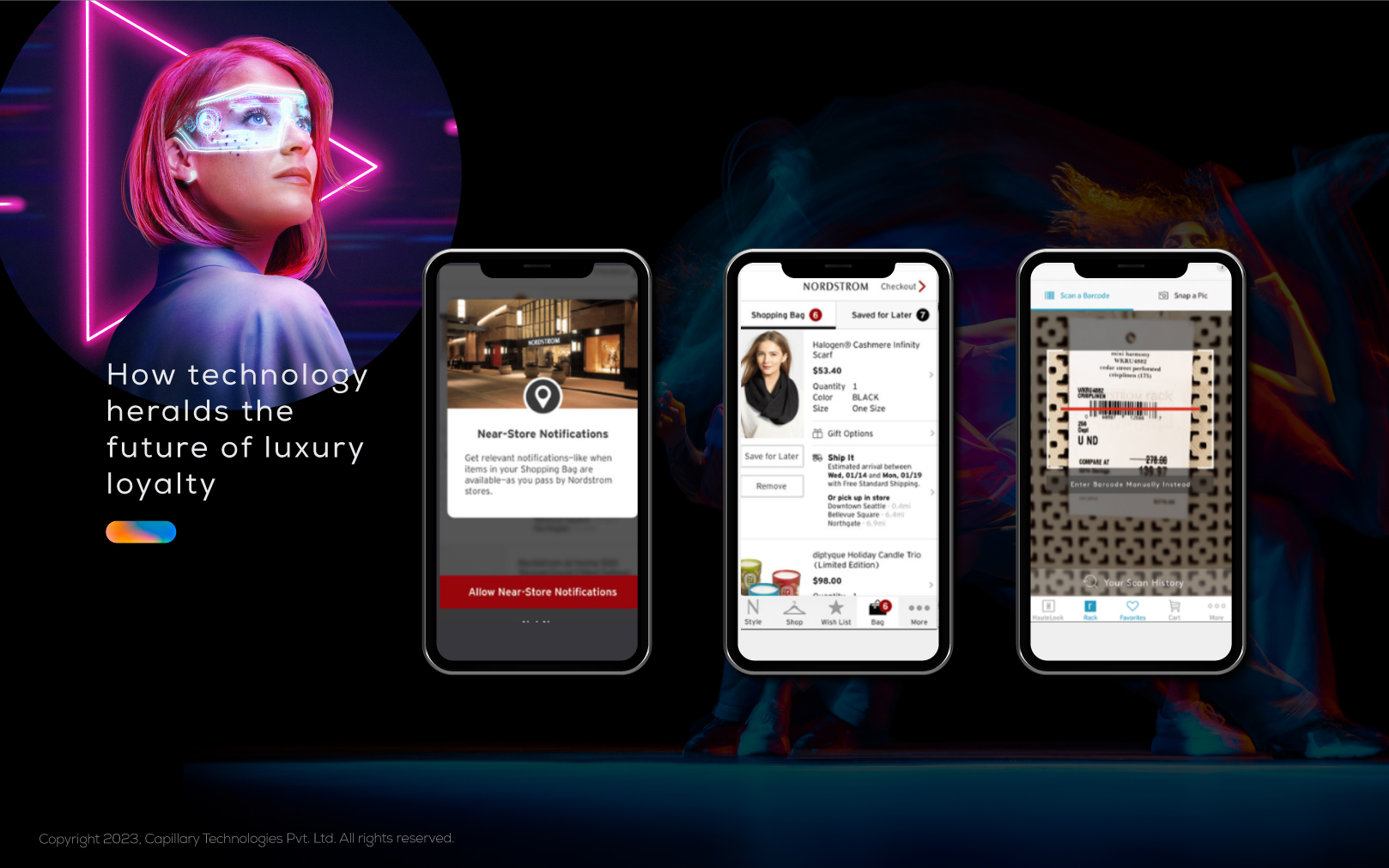- Design industry shaping loyalty programs
- Integrate easily and go live quicker
- Deliver hyper-personalized consumer experiences
Capillary named a Leader in SPARK Matrix™: Customer Loyalty Solutions, Q2 2024 Report Read more >

For decades, loyalty programs have remained a distant cousin to luxury brands. An often-debated argument is luxury brands’ willingness to take the loyalty route. As if COVID-19 wasn’t enough, 2022 started with an unexpected turn of events with a raging war leading to economic downturn across the globe. Despite this, the luxury market is expected growth was up by 21% from 2021. And by 2030, the luxury market value is expected to climb around €540-580 billion, a rise of 60% or more compared to 2022. The market is booming and marketers are now warming up to the idea of instilling brand loyalty in the luxury goods segment.
This guide captures the intricate detailing of the luxury goods market in 2022 & beyond to see how the digital progression is fostering a loyalty-first environment globally, even in the luxury retail market.

2020 & beyond presented extreme challenges – with every industry taking a hit, every sector retreating, and every luxury shopper changing once and for all. The luxury goods market saw its imminent slowdown. Globally, both brands and designers struggled to overcome the newly self-conscious behaviour of more mindful consumers. For legacy brands it was, then, about finding new ways of recreating the brands’ physical universe online. But are all the brands ready to ride along? Let’s look at 3 major challenges that stand upfront for marketers:
Luxury loyalty is all about capturing the brand’s cultural ethos, and creating a space for creativity and innovation. Let’s look at what we term as the 4Es of creating a luxury loyalty program.

Singapore’s Kris Flyer Program allows flyers to redeem their points not only on air tickets or travel-related offerings but other premium partners like five-star dining and shopping with other luxury fashion brands.

The priorities have been reset across luxury fashion brands, and five strategies clearly stood out for every retailer. As the world is dominated by Generation Y and Z, these generations are expected to account for 55% of the overall luxury sales market by 2025.
1. Lights, Camera and Live E-commerce: Did you know that Gucci livestreamed a 12 hour-long digital fashion show? Now is the time for brands to switch to live streaming platforms. Here, luxury shoppers can not only see but experience how suitable or relevant a product is for them.
800 Mn+ people watch live videos daily across Instagram and Facebook, resulting in a new roll out of features to enable brands to get the most out of their live broadcasts. In addition to Instagram Live Shopping, users now have the option to view the broadcasts live on desktop computers along with their smartphones.
2. Omnichannel now in vogue: There is now a pressing need for brands to catch hold of a customer’s attention across the right channels. Luxury fashion brands have, thus, shifted their focus to analyzing and acting upon omnichannel shopping behavior. For the prediction and capitalization of present and future luxury shopper analytics, an omnichannel integration is a key expectation for luxury retail digitization.
Amongst all, GUCCI tops the list of omnichannel digital presence. The brand remains one of the industry’s best-in-class digital performers, by leveraging digital storytelling, omnichannel experiences, eCommerce, and, of course, a constant drive to innovate online. From digital gifting with split payments to AR-powered try-on features on Snapchat and the Gucci App, the brand is constantly experimenting like there’s no tomorrow.
3. Luxuriously phygital: An everyday example of phygital retail would be a typical consumer who always shops with a smartphone in hand, often checking product details to help them choose offline. In the retail sense, the term has gained prominence recently, referring to the blending of the best online and offline features of the shopping experience. Nordstrom is a U.S. luxury fashion retailer which recognizes that the foundation of a phygital strategy is the seamless ease and convenience of the customer experience.

B. The integrated-app experience with the stores offer a seamless shopping experience to shoppers by using a combination of both physical and digital stores.
C. Their Instagram and Pinterest accounts allow users to click on a posted photo and take them straight to the Nordstrom online shop where they can order online or reserve the item in-store.
4. The Fashion Subscription Model: Subscriptions not only ensure that your consumers are updated about the latest offerings for but also promises consumer loyalty upon delivering the brand promise.
Ralph Lauren introduced The Lauren Look – the company’s first subscription apparel rental initiative. Starting at $125 a month, subscribers are able to access a constantly changing range of Lauren Ralph apparel: including dresses, pants and tops. Pieces are accompanied by suggestions from personal stylists on how to wear them.
5. Appointment shopping: Aptly shared by John Federman (CEO of JRNI), “Appointments allow you to keep the lights on and effectively schedule staff. It also keeps the staff more productive. If an associate can spend time with someone with a high propensity to buy, they can use their time more effectively.”
Lululemon leads the frontier to allow consumers to book appointments to browse before, during or after regular store hours. Giorgio Armani too opened around 100 of his stores with a new system of booking appointments online. This practice was immediately adopted post-pandemic, ensuring social distancing practiced as the new norm.
When we also look at how online luxury sales are broken down, we see that the multibrand marketplaces are expanding to reveal how the digital luxury customer is seeking an ecosystem offering more value than points. Luxury brands, thus, need to overhaul their loyalty game for the luxuriously affable Generation Z, and barge out of their closets to offer experiences building an element of exclusivity in their offerings. The conventional earn and burn won’t fit into the high-end luxury world.
Given the many trends that have shifted in the last eighteen months, the key to design a loyalty program for a luxury brand has completely been revamped. Therefore, luxury loyalty is not just about rewards, it is how brands leverage data to understand the customer buying patterns and build memorable customer experiences. However, for luxury brands to deliver this benefit, they must invest in extracting and analyzing customer data to derive meaningful insights. This is where many luxury brands show resistance today but as the field of data science progresses and more luxury brands come on board, there will be significant improvement in the times to come. Many brands have already begun to evolve their existing loyalty programs to cater to the changes in the luxury industry.

January 12, 2023 | 8 Min Read
The market is booming and marketers are now warming up to t